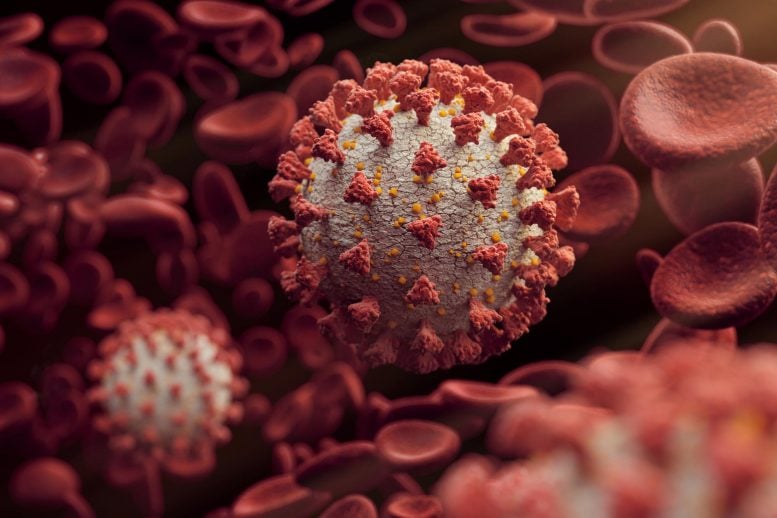
A variation in the viral genome of COVID-19 improved its ability to infect human cells and helped it become the dominant strain circulating around the world today.
- Researchers tracking the spread of COVID-19 around the world have discovered that viruses with a new variant have now overtaken the original strain
- Analysis of the virus’s genome sequence found a mutation called ‘D614G’ made the virus more infectious than the original strain, but did not cause more severe disease
- The global research team, including scientists from the University of Sheffield, had previously noted the rapidly increasing prevalence of viruses with D614G throughout the world
Researchers have shown that a variation in the viral genome of COVID-19 improved its ability to infect human cells and helped it become the dominant strain circulating around the world today.
The study, published today in the journal Cell, shows the variation is more infectious in cell cultures under laboratory conditions. The variant, named ‘D614G’, makes a small but effective change in the ‘spike’ glycoprotein that protrudes from the surface of the virus, which it uses to enter and infect human cells.
The D614G variant of COVID-19 quickly took over as the dominant strain soon after it first appeared, with geographic samples showing a significant shift in viral population from the original, to the new strain of the virus.

A map of the world showing the spread and prevalence of the new strain of the COVID-19 virus D614G (or G614 as marked on the key). Credit: University of Sheffield
Researchers from the Los Alamos National Laboratory in New Mexico and Duke University in North Carolina, partnered with the University of Sheffield’s COVID-19 Genomics UK research group to analyse genome samples published on GISAID, an international resource for sharing genome sequences among researchers worldwide.
Dr. Thushan de Silva, Senior Clinical Lecturer in Infectious Diseases at the University of Sheffield, led analysis of data from Sheffield. He said: “We have been sequencing SARS-CoV-2 strains in Sheffield since early in the pandemic and this allowed us to partner with our collaborators to show this mutation had become dominant in circulating strains. The full peer-reviewed study published today confirms this, and also that the new D614G genome mutation variant is also more infectious under laboratory conditions.
“Data provided by our team in Sheffield suggested that the new strain was associated with higher viral loads in the upper respiratory tract of patients with COVID-19, meaning the virus’s ability to infect people could be increased.
“Fortunately at this stage, it does not seem that viruses with D614G cause more severe disease.”
Dr. Bette Korber, from the Los Alamos National Laboratory in New Mexico, was the lead author of the study. She said: “It is possible to track SARS-CoV-2 (COVID-19) evolution globally because researchers worldwide are rapidly making their viral sequence data available through the GISAID viral sequence database. Currently, tens of thousands of sequences are available through this project, and this enabled us to identify the emergence of a variant that has rapidly become the globally dominant form.”
New supporting experiments, more extensive sequencing and clinical data, and improved statistical models have been published today in full at Cell, however the researchers are keen to stress that further laboratory analysis in live cells needs to be done to determine the full implications of the mutation.
“It’s remarkable to me,” commented Dr. Will Fischer, from Los Alamos National Laboratory and an author on the study. “That this increase in infectivity was detected by careful observation of sequence data alone, and that our experimental colleagues could confirm it with live virus in such a short time.”
The researchers will continue to monitor other mutations in the virus to help fight COVID-19 at a global level.
Reference: “Tracking changes in SARS-CoV-2 Spike: evidence that D614G increases infectivity of the COVID-19 virus” by B. Korber, W.M. Fischer, S. Gnanakaran, H. Yoon, J. Theiler, W. Abfalterer, N. Hengartner, E.E. Giorgi, T. Bhattacharya, B. Foley, K.M. Hastie, M.D. Parker, D.G. Partridge, C.M. Evans, T.M. Freeman, T.I. de Silva, C. McDanal, L.G. Perez, H. Tang, A. Moon-Walker, S.P. Whelan, C.C. LaBranche, E.O. Saphire and D.C. Montefiori on behalf of the Sheffield COVID-19 Genomics Group, 2 July 2020, Cell.
DOI: 10.1016/j.cell.2020.06.043

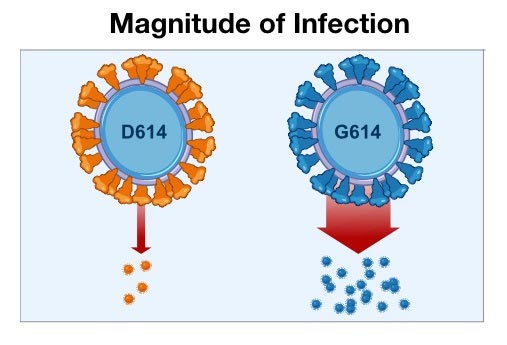


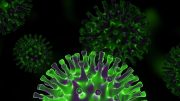

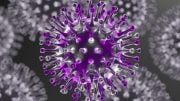

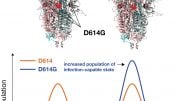
Is your graph wrong? You say the D variant became more common, but the graph shows the G variant (blue) taking over.
A map of the world showing the spread and prevalence of the new strain of the Covid-19 virus D614G (or G614 as marked on the key). Credit: University of Sheffield
So will the current vaccine in research be effective for this strain of the virus or do we now start from scratch?
Wow! I have utilized research for years from Sheffield to direct my response to any pandemic. Right!
Yesterday I heard someone say that COVID-19 is airborne.
My husband and I stay at home most of the time anyway ~ except for grocery shopping.
Fearmongering bulls#!t. All of it.
Asbestos cloth would probably be a bad choice.
I would say the virus is changing as a natural course of neo-endemic mutation. Its ripe new hosts offer a grand field of play…
I think some people need to wake up and face this virus because as I understand it there are many yet unknown viruses that have potentially extreme levels of severe infections up to and including death.